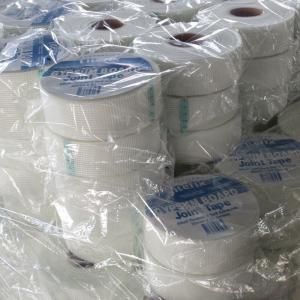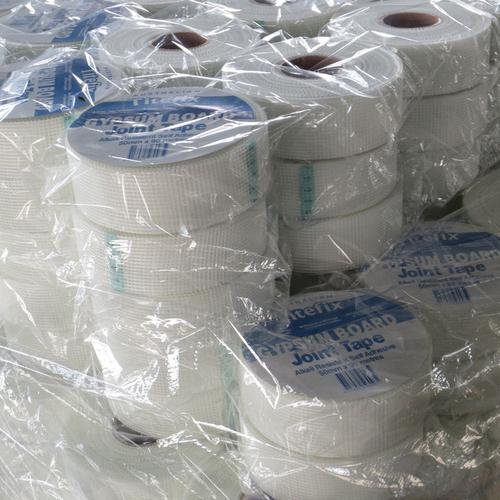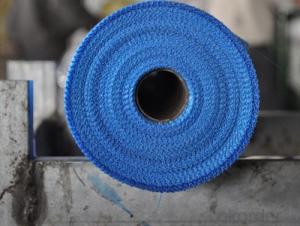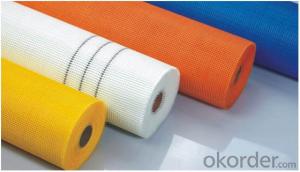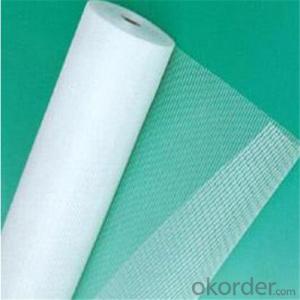High Temp Fiberglass Fabric Mesh Cloth Roll
- Loading Port:
- Qingdao
- Payment Terms:
- TT OR LC
- Min Order Qty:
- -
- Supply Capability:
- 1000000 m²/month
OKorder Service Pledge
OKorder Financial Service
You Might Also Like
Specifications
Alkali-resistant wall reinforced Fiberglass Mesh fiberglass manufacturer
Pass CE &ISO 9001
width can be 200cm
Firm mesh
The grid component
Fiberglass mesh is based on glass fiber woven fabric as substrate, the macromolecular
anti emulsion coating. It has good alkali resistance, flexibility and latitude to the high tensile
strength, with its good chemical stability, high strength, light weight, good dimensional
stability, strong impact resistance, pest control, fire protection, thermal insulation and
other features, welcomed by the user .
Use the grid cloth
Its widely used in: 1, wall reinforcing material; 2, reinforced cement products; 3, internal and
external wall insulation, 4, granite, marble, mosaic special mesh back paste network;
5, waterproof cloth, asphalt roofing; 6, reinforcing materials of plastics, rubber products;
7, fire board; 8, the grinding wheel base; 9, highway pavement with geogrid; 10, building
sealing tape etc.
- Q: How does fiberglass fabric handle moisture?
- With its exceptional moisture resistance and high water-resistant properties, fiberglass fabric is renowned. Its structure, comprising interwoven glass fibers, prevents water absorption and remains unaffected by moisture or humidity. Consequently, fiberglass fabric proves itself as an ideal choice for various purposes, especially those involving exposure to moisture, like boat hulls, outdoor furniture, and building materials. Furthermore, it inhibits the growth of mold or mildew, further enhancing its capacity to withstand moisture.
- Q: How is fiberglass fabric used in the automotive industry?
- Fiberglass fabric is commonly used in the automotive industry for reinforcing and strengthening various components. It is utilized in the manufacturing of car body panels, hoods, bumpers, and interior parts. The lightweight and durable nature of fiberglass fabric make it an ideal material for enhancing the structural integrity of vehicles without adding excessive weight. Additionally, fiberglass fabric can also be employed in the production of insulation materials, soundproofing panels, and upholstery, further improving the overall comfort and performance of automobiles.
- Q: How does fiberglass fabric perform in high-humidity environments?
- Fiberglass fabric boasts exceptional performance in environments with high humidity. Its non-absorbent properties ensure it remains impervious to moisture and unaffected by water vapor in the air. As a result, even in high-humidity conditions, fiberglass fabric maintains its structural integrity, strength, and dimensional stability. Unlike certain materials that may warp, shrink, or become brittle in humid conditions, fiberglass fabric remains unaffected. Moreover, the non-porous nature of fiberglass fabric hinders the growth of mold, mildew, and other fungi that thrive in moist surroundings. This renders fiberglass fabric an excellent choice for various applications, including boat building, outdoor furniture, and construction projects in high-humidity areas. Overall, fiberglass fabric's resistance to moisture and its ability to withstand high-humidity environments establish it as a reliable and durable material in such conditions.
- Q: Can fiberglass fabric be used for insulation in steam systems?
- No, fiberglass fabric is not suitable for insulation in steam systems as it does not have the necessary heat resistance to withstand high temperatures.
- Q: How is fiberglass fabric dyed?
- Fiberglass fabric can be dyed using a variety of methods. One common way is through a process called solution dyeing, where the color is added to the solution before the fabric is formed. This method ensures that the color penetrates the entire fabric, resulting in a vibrant and long-lasting dye. Another method is called piece dyeing, where the fabric is dyed after it has been woven or knitted. This method allows for a wider range of color options and can be used to create patterns or designs on the fabric. In some cases, fiberglass fabric may also be printed with dyes using a technique called screen printing. This allows for more intricate designs and can be particularly useful for branding or decorative purposes. Overall, the dyeing process for fiberglass fabric depends on the desired outcome and can vary based on the specific requirements of the fabric and the manufacturer.
- Q: How does fiberglass fabric perform in fatigue strength?
- Fiberglass fabric generally performs well in fatigue strength due to its high tensile strength and flexibility. It can withstand repetitive loading and cyclic stresses without significant loss of strength or performance, making it suitable for applications where durability and resistance to fatigue are crucial.
- Q: How do fiberglass fabrics perform in terms of chemical resistance?
- Fiberglass fabrics possess exceptional chemical resistance due to their inherent properties. These properties, such as non-reactivity and stability, make fiberglass highly resistant to various chemicals, including acids, bases, solvents, and even strong oxidizing agents. The reason behind the chemical resistance of fiberglass fabrics lies in their composition. Typically, these fabrics are constructed by weaving glass fibers together. Glass fibers, being non-absorbent and non-reactive with most chemicals, offer high resistance against degradation or harm. Nevertheless, it is worth noting that the chemical resistance of fiberglass fabrics can differ based on the type of resin used to bind the fibers. Different resins may exhibit varying levels of resistance to specific chemicals. Hence, it is vital to carefully consider the intended chemical exposure and application when selecting a fiberglass fabric. To summarize, fiberglass fabrics are well-regarded for their outstanding chemical resistance. They can endure exposure to a wide range of chemicals without undergoing significant damage or deterioration. However, it is always advisable to consult the manufacturer's specifications and recommendations to ensure that the chosen fiberglass fabric is suitable for the intended chemical environment.
- Q: How is fiberglass fabric used in the production of aerospace components?
- Fiberglass fabric is commonly used in the production of aerospace components due to its lightweight and high-strength properties. It is used as a reinforcement material in the manufacturing of composite parts, such as aircraft wings, fuselage panels, and structural components. The fabric is impregnated with resin and then cured to form a rigid and durable composite structure. This combination of fiberglass fabric and resin provides excellent strength-to-weight ratio, corrosion resistance, and thermal stability, making it ideal for aerospace applications.
- Q: Can fiberglass fabric be used for making heat shields?
- Yes, fiberglass fabric can be used for making heat shields. It is a commonly used material due to its high temperature resistance and ability to withstand intense heat.
- Q: How does fiberglass fabric perform in durability?
- Fiberglass fabric is known for its exceptional durability. It is highly resistant to chemicals, moisture, and extreme temperatures, making it suitable for various demanding applications. Additionally, fiberglass fabric is highly durable against wear and tear, making it long-lasting and reliable.
Send your message to us
High Temp Fiberglass Fabric Mesh Cloth Roll
- Loading Port:
- Qingdao
- Payment Terms:
- TT OR LC
- Min Order Qty:
- -
- Supply Capability:
- 1000000 m²/month
OKorder Service Pledge
OKorder Financial Service
Similar products
Hot products
Hot Searches
Related keywords
